It is now around noon on our first full day of sightseeing. We have already covered more ground than the weeds on my 5 acres. Our next stop is the Hutong. In it’s most simplified explanation, a hutong is a series of narrow residential streets and alleys in the center of Beijing. The hutong is now a protected area as it shows the culture and traditional life of the city before the urbanization and infrastructure that represents modern Beijing was put in place. Some of the dwellings are several hundred years old and have been in families for generations. Our local guide for this part of the city is a young man who calls himself, “Tiger”. He is adorable and I want to take him home with me.
This is the type of sightseeing I love. I want to see what real, everyday life is for the people. Don’t get me wrong, I also love seeing the historical sights but this is where stuff gets real! We are going to have lunch at the home of one of the local residents. She has converted some of her living space into a restaurant. The rooms are set up like her regular dining room and we can see the communal kitchen where our meal is being prepared across the alley. Tiger translates for her and she tells us that her home which was previously owned and occupied by her single family was subdivided and shared by 3 other families after Chairman Mao took over in the 1940’s. It seems the Chairman only allotted so many square meters of living space per family and since the government of China now owned all the land they were required to have 3 more families move into their house. I think it was in the 1970’s or 80’s when the government backed down some and said that the original owning families could re-occupy their former living spaces but no provisions were made to relocate the other sharing families. Consequently, the government provided a stipend if the families were allowed to remain on site and so it goes until today.
After lunch we do something super-touristy and take a rickshaw ride through the neighborhood. It affords us an opportunity to navigate the extremely narrow streets with less threat to our lives than if we were on foot. It’s pretty gritty on these streets. We actually see a small child defecating in the street being assisted by who I assume is her grandmother. A little too real for my soft, American psyche. We unload from the rickshaw and hop back on Bus #2 to head to the Temple of Heaven.
The temple is now located within a massive park complex of 660 acres. As we approach the area where the temple is located we see many groups of senior citizens engaging in boisterous card games.
The Temple of Heaven is where the emperor offered up prayers and sacrifices for a good harvest through elaborate annual ceremonies. Originally built in 1406, it has been partially restored numerous times due to damage incurred during conflicts like the Opium Wars and the Boxer Rebellion as well as fires from lightning strikes.
There are also large displays of flower sculptures located in the complex. These are made from chrysanthemums. A symbol of nobility, the chrysanthemum is considered one of the “Four Gentelmen” of China along with the plum blossom, orchid and bamboo. All are often seen as themes in Chinese art and poetry.
While heading back to the bus our guide shows us an adult “playground” that is also in the park complex. It is equipped with stretching and gymnastic equipment, walking trails and a labyrinth. It is being well utililzed. Why don’t we have these? Don’t we have an obesity epidemic here??
Are you exhausted yet? We are! Take a nap then come back and finish reading this. It’s off to dinner for us and then to a performance of the Beijing Opera.
This is not your traditional fat Italians singing Verdi. It’s more of a theatrical experience that combines music, dance, mime and kung fu. The vocals sound like what would be reproduced if you took an angry Siamese cat by it’s tail and repeatedly swung it over your head. In fact, the sound the cat makes would be more soothing. I see people in our group nodding off before the curtain is even up. Scenery is minimal which makes the impressive costumes and make up shine. The colors are brilliant and the embroidery is rich and lavish. Still, not interesting enough to keep me from slumber. Suddenly, the gongs in the orchestra are crashing and I am awakened to see our heroine engaged in a kung-fu battle with the villians. She is fighting off a frenzy of spears being thrown at her which she deftly returns to their owners with kicks and thrusts. It’s the best part of the show and has provided enough stimulation to allow me to summon the energy to get back on the bus. We return to our hotel where we collapse in exhaustion. Not to fear! We will be rising extra early tomorrow morning so we can board our bus then climb the Great Wall of China.
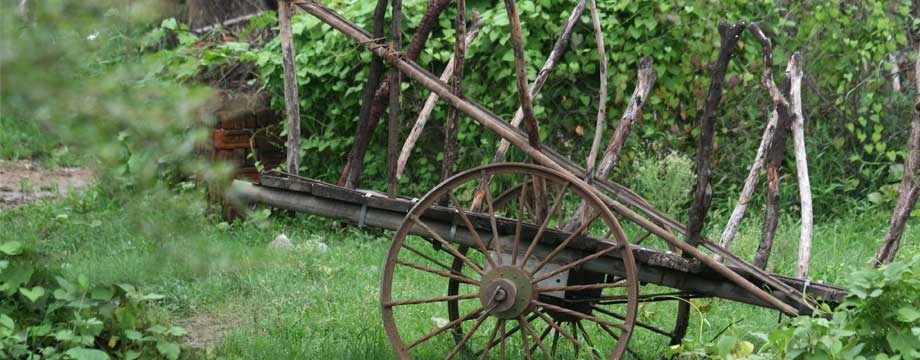
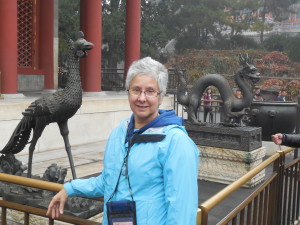

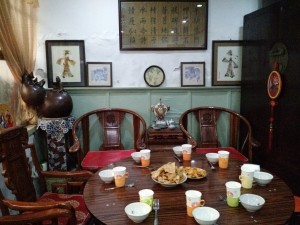
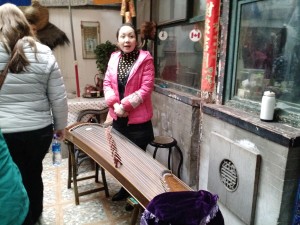
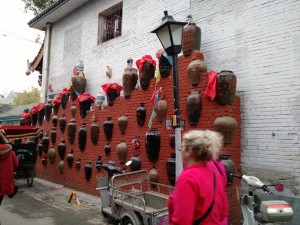


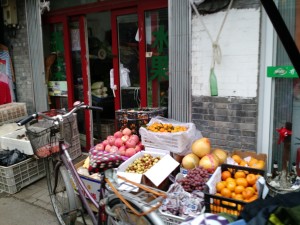
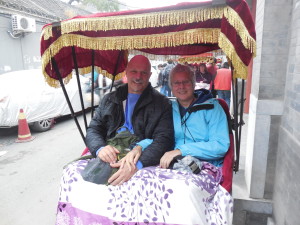
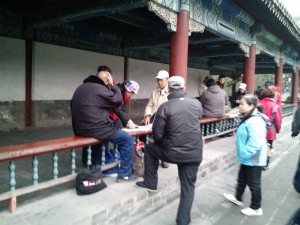
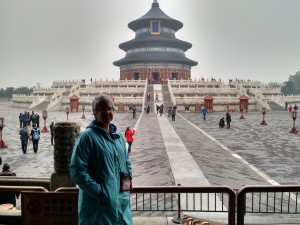
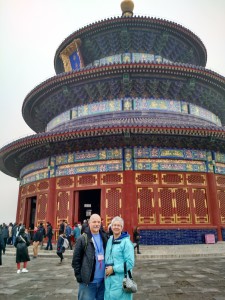
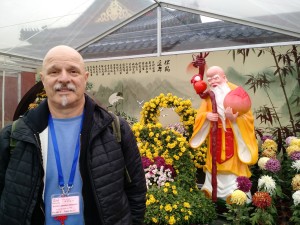
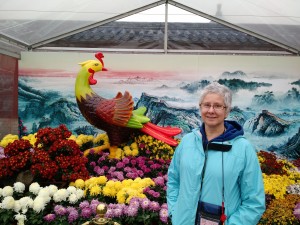
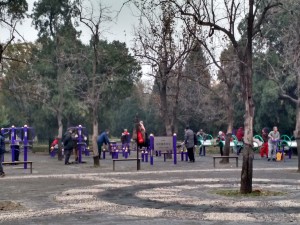
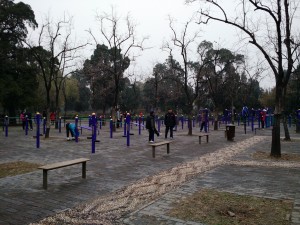
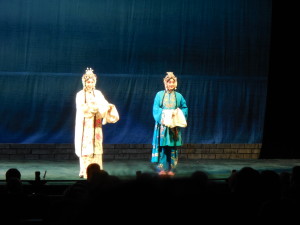
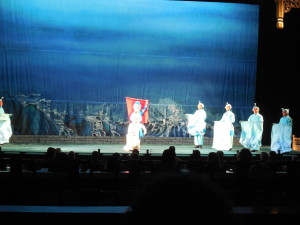
 Follow
Follow
6 Responses to Beijing Part 2